All about caring for remontant raspberries in spring
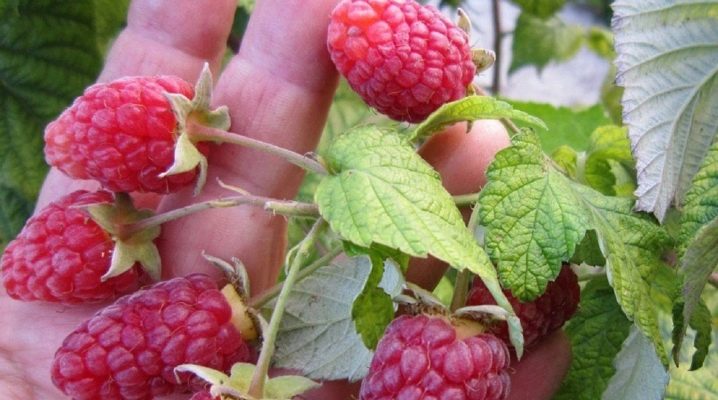
Caring for remontant raspberries in the spring raises a lot of questions among novice gardeners about how to handle it, how to transplant and properly cut the shoots after winter. In fact, it's pretty easy to follow all the rules if you follow the instructions. A detailed overview of all the necessary agrotechnical measures will help to carry out spring feeding on time, remove the shelter and cut remontant raspberries without loss for the future harvest.
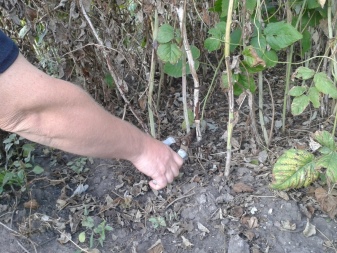
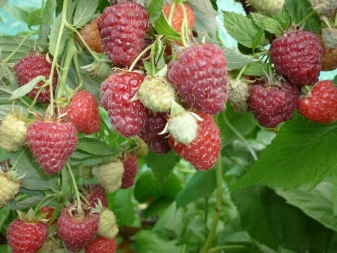
Peculiarities
Proper care of remontant raspberries in spring is the basis for good fruiting and active growth of shoots. It is during this period that it is important not to miss the moment to remove the shelter after winter, apply fertilizers, remove old and damaged branches.
All this must be done on time, starting work after the snow melts.
Since remontant varieties have time to bear fruit twice during the season, you need to take care of them in the open field especially carefully. The basic rules are quite simple, but they require strict adherence.
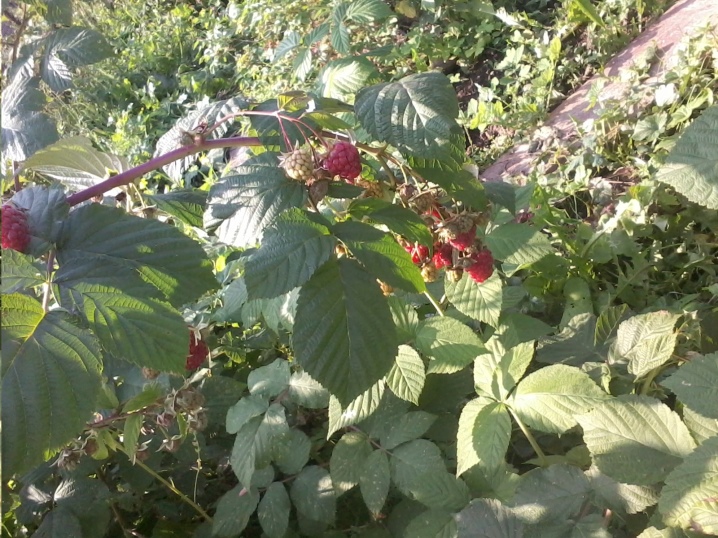
Shelter removal and garter
The first problem for a novice gardener is choosing the right moment to free the remontant raspberry from the shelter. In fact, there is no need to wait too long. As soon as the sun begins to warm up thoroughly, you can start removing the covering material. If you postpone this event, the branches may be affected by the fungus due to the formation of a too humid and warm environment. Late removal of the shelter can also lead to damage to the raspberry kidneys by insect larvae.
The optimal moment to free the bushes from winter protection is the establishment of night temperatures in the region not lower than 0 degrees. In this case, daily indicators may not exceed +5. The branches freed from the covering material do not unbend immediately, leaving them lying on the ground.
This will allow, if necessary, to reuse the protection during return frosts, without interfering with the heating of the soil.
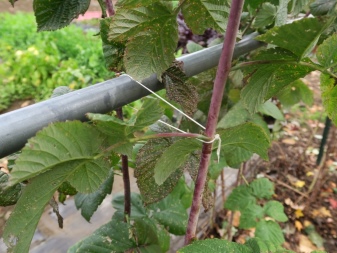
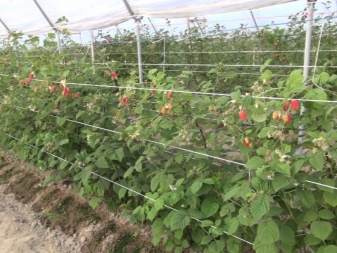
Much depends on whether the remontant raspberry is grown in an annual crop or not. If full pruning was used in the fall, and the root zone was covered with a layer of mulch, it is worth waiting for the appearance of young growth. In this case, the shelter will become a breeding ground for the raspberry tree, it will help to retain enough moisture in the soil.
If the cultivation takes place in a perennial crop, the procedure for removing the shelter will be different. For the period of cold weather, it is used in the dark, opening during the day. As soon as the night frosts stop, it will be possible to completely remove the protection from the raspberry tree. After that, the shoots of the last year are straightened, and then tied to the prepared trellises.
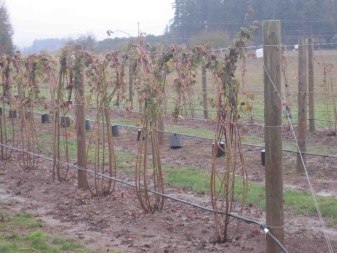
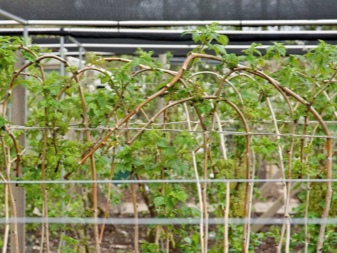
Watering
Adequate moisture is the basis for getting a good harvest from remontant raspberries. The main focus is on watering at the following stages of plant vegetation:
- during flowering;
- when setting fruit;
- during the ripening period of berries.
In the spring months, especially immediately after the snow melts, the soil is saturated with moisture.
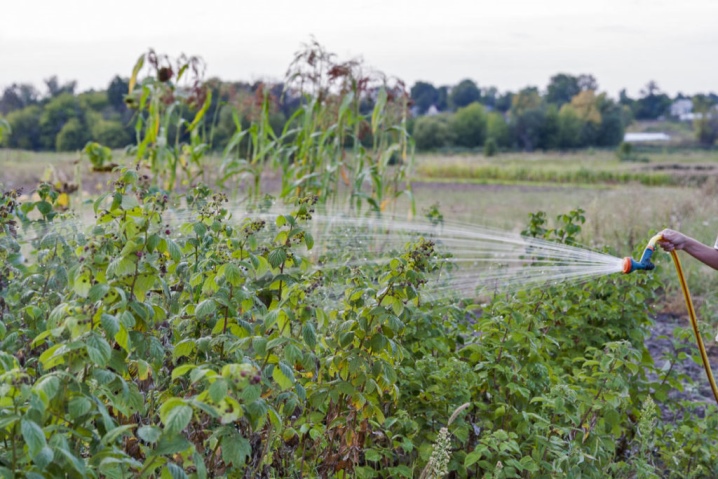
Regular watering is not required for the shrub. For the first time, the raspberry tree will have to be moistened exclusively when hot days are established, not earlier than mid or late May.
If the soil is very dry, root watering is done, in the morning or in the evening. With a large planting area, it is worth thinking about laying a drip irrigation system that contributes to the optimal maintenance of soil moisture.

Top dressing
It is necessary to fertilize remontant raspberries from 2-3 years after planting. Until that time, the plant will receive nutrients from those reserves of organic matter and mineral fertilizers that were laid in the planting pit. If the age of the seedling is unknown, it is worth following the standard work scheme. You can feed remontant raspberries in early spring by adding nutrients in a specific order.
- The first fertilizers are nitrogen fertilizers. They will be needed to build up green mass, to enhance the growth of shoots. All this will lay the foundation for future abundant fruiting.
- Organic food. They are brought in before the buds begin to bloom. A solution of cow dung at a concentration of 1:10 is suitable. Watering is carried out at the root, up to 5 liters per 1 m2. Repeatedly, such a top dressing will be needed before flowering.
- Complex and mineral fertilizers. They are brought under the bush in the early spring period. Enough 60 g of nitroammofoska per 1 m2. Additionally, ammonium nitrate is used - up to 40 g per 1 m2 and urea (up to 30 g).
- Potassium-phosphorus feeding. It is carried out in the 2-3 decade of May, foliar method. You can use "Kristalon" in a proportion of 1 g per 1 liter of water. 5 liters of solution are consumed per 1 m2.

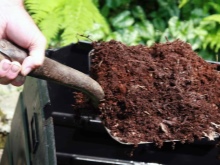
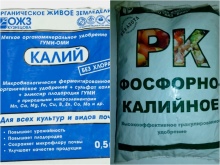
Spring feeding is very important for remontant raspberries. Since the plants bear fruit twice during the season with little or no break, the bushes become more depleted.
Timely fertilization will help replenish the supply of nutrients necessary for growth and development.
Missing the moment, you can make the raspberry tree more vulnerable to disease and pest damage. Its development will slow down, the timing of flowering and fruiting will shift.
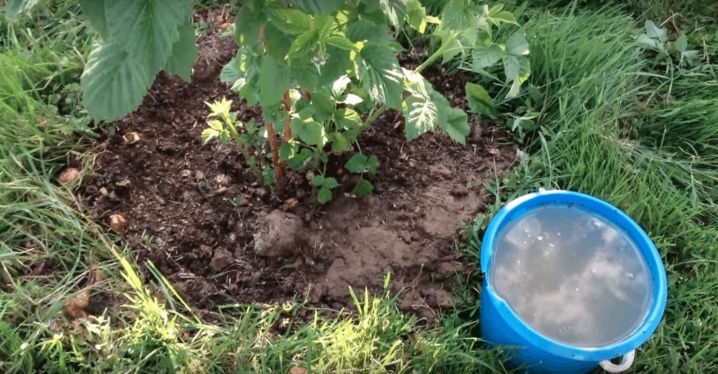
Pruning
It is difficult for novice gardeners to figure out how to properly prune raspberries in the spring. To obtain a large yield, to increase the number of fruiting shoots, the procedure is carried out according to certain schemes. Some agronomists recommend choosing pruning for beginner gardeners, designed for single picking of berries without dividing into autumn and summer. The decision-making remains with the summer resident himself.
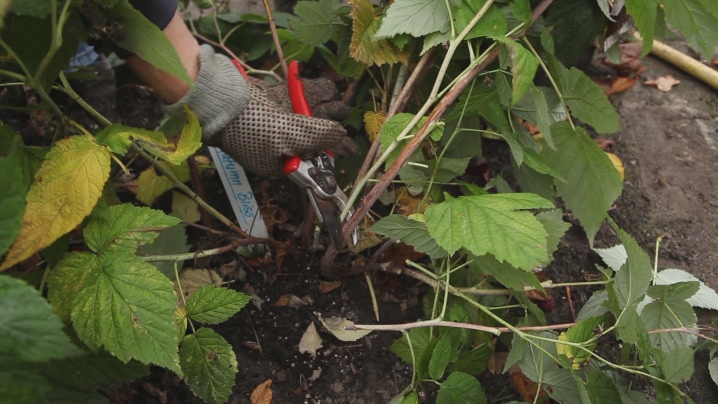
Timing
Spring raspberry pruning is carried out mainly in regions with mild and warm winters. Here it is not recommended to perform this procedure in the fall, since in this case the risks of germination of underground buds increase.
Pruning begins in the spring immediately after the shelter is removed from the bushes.
In cold regions, this approach also has its advantages. Shoots under cover will better protect the root system from freezing, so early spring pruning is chosen more often than others here.
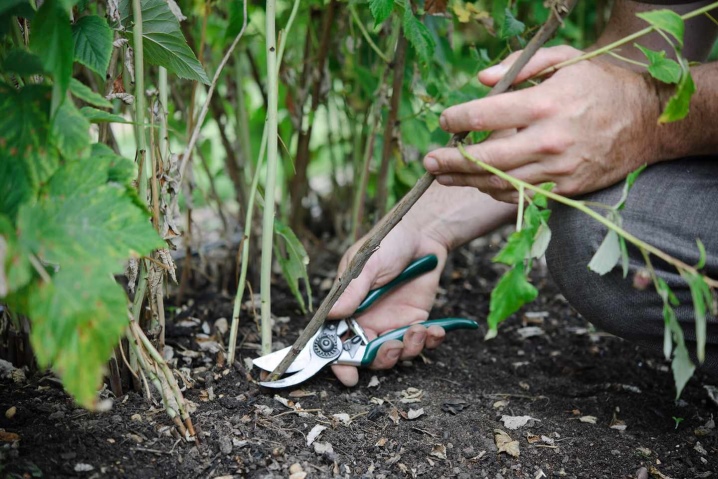
Schemes
Depending on whether it is planned to harvest raspberries according to a remontant scheme, with repeated fruiting, or preference is given to a single, but friendly and abundant return of berries, the pruning procedure changes. The gardener must make a choice from the very beginning.
The main (remontant) scheme for growing raspberries provides for the following pruning procedure:
- Sanitary measures. These include removing weak, broken, diseased shoots. Pruning is carried out in early spring, immediately after removing the shelter. At the end of the procedure, the top of the plant is reduced, but not more than 10 cm.
- Thinning. It is performed in May if the young growth in the raspberry tree grows too actively. Annual shoots during this period are pinned upon reaching a height of 100 cm.
- Removing biennial branches. It is carried out at the end of the first wave of fruiting, usually in July.

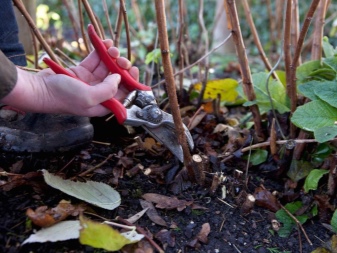
Sometimes even remontant varieties of raspberries have to be grown in an annual crop, with the harvest being obtained exclusively on the shoots of the current year.
This is done on purpose in order to increase collection volumes. However, in regions with a cold climate, such measures are often taken by force.

The second full-fledged crop here simply does not have time to ripen. In this case, the trimming scheme changes:
- In early spring, it is carried out only if the shoots are not removed under the root in the fall.
- Young shoots that have appeared by mid-May are subjected to thinning. The remaining shoots in the bush should be 25 cm apart.
As soon as the branches in the raspberry tree reach a height of 1 meter, pinning is carried out. It will help stimulate the development of side branches.

Treatment against diseases and pests
Repaired raspberries do not have to be treated with fungicidal and insecticidal preparations as often as ordinary raspberries. This is due to a higher level of immune defense. If the bushes are grown as an annual crop, with the complete cutting of the shoots of the current year in the fall, they are practically invulnerable to insect pests.
Plants that are sheltered for the winter have a higher risk of infection. If the spring is long and cold, with a lot of precipitation, you will have to pay a little more attention to sanitization.
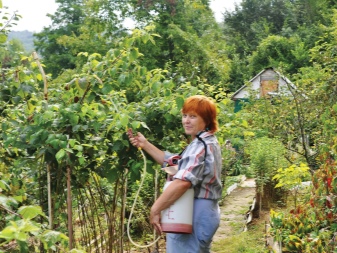
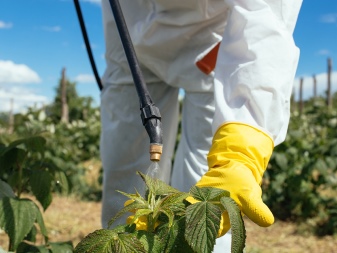
The order of their conduct will be as follows:
- Spraying with a solution of Bordeaux mixture in 3% concentration. It is performed during the period when daytime temperatures reach +15 degrees Celsius.
- Spraying with Topaz. It is used to prepare a solution at a concentration of 1 ml per 5 liters of water. It is important to complete the processing before flowering. In the same period, you can spray the raspberry moth with a solution of milk of lime and the aphid with Fitoverm.
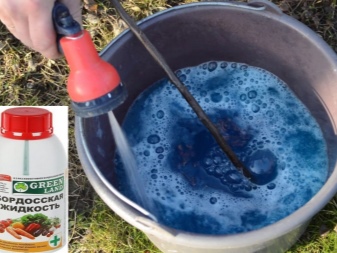
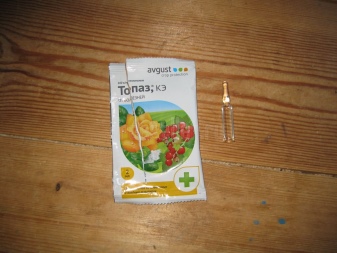
Timely reorganization of the bushes practically excludes the possible defeat of plantings by fungal infections. If the terms of the preventive treatment were maintained correctly, the plants will endure spring without unnecessary problems.
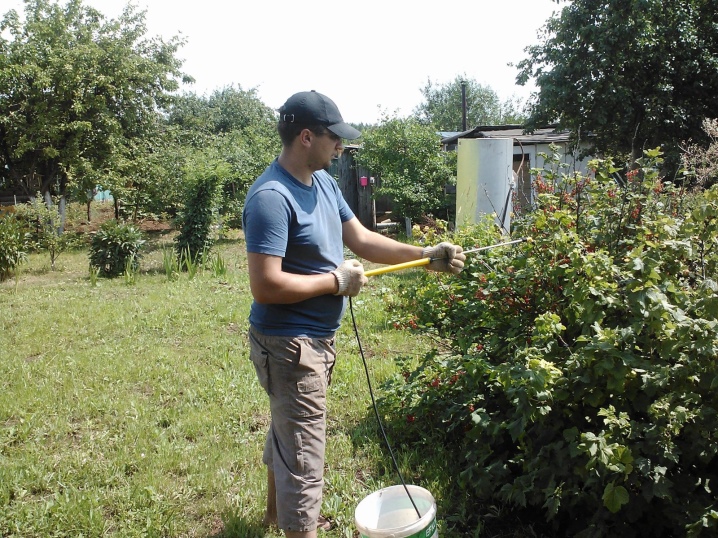
Transfer
It is believed that transferring remontant raspberries to a new place is best in spring. This is due to the fact that the plant will have more time for rooting, it will not be damaged by frost. In addition, deciding to replant the bushes in the spring, you can get the first harvest from them already this year. The remontant raspberry takes root especially well in temperate climates.
It is important to take into account that these terms are relevant for plants with an open root system, seedlings in containers do not have such restrictions, they can be transferred to a new place at any time, except for the winter months.

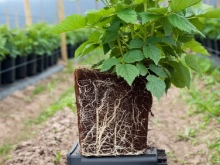
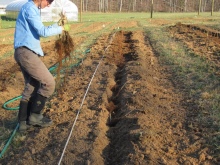
The basic rules for the spring transplantation of remontant varieties of raspberries are as follows:
- Choosing a well-lit location. Re-fruiting plants require maximum warmth and sun.
- Well fertilized, loose soil. Plants should not be transplanted into swampy or very acidic soil. It is optimal if siderates are sown beforehand on the site of the future raspberry tree.
- Seedling selection. For transferring to a new place, it is better to use ready-made plants with a branch diameter at the base of at least 5 mm. A well-developed root system with fibrous shoots, elastic and sufficiently long - about 15-20 cm is welcomed.
- Refueling the pit. 30 kg of humus and 10 kg of peat, 1/2 of a bucket of ash are placed in it.
- Preparation. It starts 24 hours before boarding. The roots of the plant are placed in a solution to stimulate their formation. Immediately before transferring to the pit, the bush is removed from the liquid, dipped in a mixture of clay and liquid cow dung - the so-called "talker".
- Formation of curtains. This is the name given to rows of 2-3 bushes, placed half a meter from each other. When planting in rows, the distance between them is maintained at 2 m. Neighboring plants should be 60 cm apart. Planting depth should be the same as that used at the previous location.
- Watering. At the end of the bush transplant procedure, at least 10 liters of water must be added to the root area.
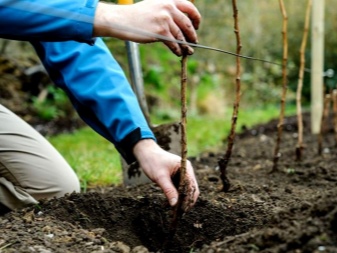
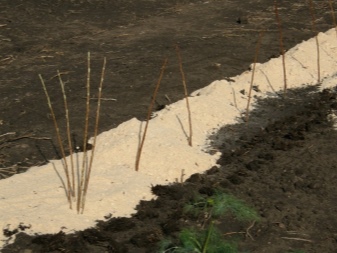
The process of transferring remontant raspberries will not be too traumatic for the plant if done correctly. Before it takes root, which will be evidenced by the appearance of a young growth, you need to monitor the degree of moisture in the soil, prevent it from drying out, and shade the bush if necessary.












The comment was sent successfully.